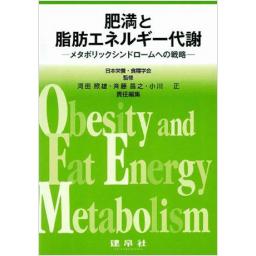1) Matsumoto T.,Miyawaki T.,Ue H.et al:Autonomic responsiveness to acuteold exposure in obese and non-obese young women. Int J Obesity 1999;23; 793-800.
3) 森谷敏夫, 林 達也, 枡田 出ほか: 運動前後における脳波, 自律神経, 血圧・循環調節ホルモンの変化. 運動生化学 1997; 9; 112-115.
4) Amano M.,Kanda T.,Ue H. et al:Exercise training and autonomic nervousystem activity in obese individuals. Med Sci Sports Exer 2001;33;12871291.
5) 森谷敏夫: 生活習慣病における運動療法の役割. 日本整形外科スポーツ医学会雑誌 2006; 25; 361-368.
6) Moritani T.,Kimura T.,Hamada T.et al:Electrophysiology and Kinesiologyor Health and Disease. J Electromyogr Kinesiol 2005;15;240-255.
7) Ue H., Masuda I., Yoshitake Y. et al:Assessment of cardiac autonomicervous activities by means of ECG R-R interval power spectral analysis andardiac depolarization-repolarization process. Ann Noninvasive Electrocardiol 2000;5;336-345.
8) Billman G.E.:Cellular mechanisms for ventricular fibrillation.News Physiolci 1992;7;254-259.
9) Billman G.E., Hoskins R.S.:Time-series analysis of heart rate variabilityuring submaximal exercise:evidence for reduced cardiac vagal tone innimals susceptible to ventricular fibrillation. Circulation 1989;80;874-880.
10) Akselrod S., Gordon D., Ubel F.A. et al:Power spectrum analysis of heartate fluctuation:a quantitative probe of beat-to-beat cardiovascular control.cience 1981;213;220-222.
11) 森谷敏夫: 運動による自律神経活動の賦活とその生理学的意義. 糖尿病の食事・運動療法(津田謹輔, 林 達也編集), 文光堂, 2007, p162-168.
12) Matumoto T., Miyawaki C., Ue H. et al:Effects of capsaicin-containing yellow curry sauce on sympathetic nervous system activity and diet-induced thermogenesis in lean and obese young women. J Nutr Sci Vitaminol 2000; 46;309-315.
13) Matumoto T., Miyawaki C., Ue H. et al:Comparison of thermogenic sympathetic response to food intake between obese and non-obese young women. Obesity Res 2001;9;78-85.
14) 森谷敏夫, 永井成美: 運動効果を生かす食品. 血圧 2004; 11; 1297-1302.
15) Nagai N., Sakane N., Ueno M.L. et al:The-3826A→G variant of the uncoupling protein-1 gene diminishes postprandial thermogenesis after a high-fat meal in healthy boys. J Clin Endocrinol Metabol 2003;88;5661-5667.
17) Nagai N., Hamada T., Kimura T. et al:Moderate physical exercise increases cardiac autonomic nervous system activity in children with low heart rate variability. Child's Nervous System 2004;20;209-214.
18) 永井成美, 坂根直樹, 森谷敏夫: 朝食欠食, マクロニュートリエントバランスが若年健常者の食後血糖値, 満腹感, エネルギー消費量, 及び自律神経活動へ及ぼす影響. 糖尿病 2005; 48; 761-770.
19) 健康・栄養情報研究会編: 平成15年国民健康・栄養調査報告, 第一出版, 2005, p.320, 付録p.3
21) Matsumoto T., Ushiroyama T., Morimura N. et al:Autonomic nervousystem activity in the late luteal phase of eumenorrheic women with premenstrualymptomatology. J Psychosomat Obst Gynecol 2006;27(3);131-139.
22) 松本珠希, 後山尚久, 木村哲也ら: 自律神経活動から評価した更年期外来における心理療法の臨床効果. 日本更年期医学会雑誌 2007; 15; 135-145.
23) Matumoto T., Miyawaki C., Ue H. et al:Effects of capsaicin-containing yellow curry sauce on sympathetic nervous system activity and diet-induced thermogenesis in lean and obese young women. J Nutr Sci Vitaminol 2000; 46;309-315.
24) Matumoto T., Miyawaki C., Ue H. et al:Comparison of thermogenic sympathetic response to food intake between obese and non-obese young women. Obesity Res 2001;9;78-85.
26) Nagai N., Matsumoto T., Kita H. et al:Interrelationship of the Autonomicervous System Activity and the State and Development of Obesity inapanese School Children. Obesity Res 2003;11;25-32.
27) 永井成美, 森谷敏夫, 坂根直樹ほか: 香辛料辛味成分が小児の食事誘発性熱産生, 満腹感, 及び交感神経活動へ及ぼす影響. 肥満研究 2003; 9; 52-59.
28) Nagai N., Sakane N., Hamada T. et al:The effect of a high-carbohydrateeal on postprandial thermogenesis and sympathetic nervous system activityn boys with a recent onset of obesity. Metabolism 2005;54;430-438.
29) Nagai N.,Sakane N.,Moritani T.:Metabolic responses to high-fat or low-fateals and association with autonomic nervous system activity. J Nutr Sciitaminol 2005;51;355-360.
30) Shihara N.,Yasuda K.,Moritani T.et al:The association between Trp64Argutation of the s3-adrenergic receptor and autonomic nervous system activity. Clin Endocrinol Metab 1999;84;1623-1627.
31) Shihara N., Yasuda K., Moritani T. et al:Cooperative effect of polymorphisms of uncoupling protein 1 and β3-adrenergic receptor genes on autonomic nervous system activity. Int J Obesity 2001;25;761-766.
32) Nagai N., Sakane N., Ueno M.L. et al:The-3826A→G variant of the uncoupling protein-1 gene diminishes postprandial thermogenesis after a high-fat meal in healthy boys. J Clin Endocrinol Metab 2003;88;5661-5667.
33) Shibata M.,Moritani T.,Miyawaki T.et al:Exercise prescription based uponardiac vagal activity for middle-aged obese women.Int J Obesity 2002;26; 1356-1362.
35) Nagai N., Hamada T., Kimura T. et al:Moderate physical exercise increases cardiac autonomic nervous system activity in children with low heart rate variability. Child's Nerv Syst 2004;20;209-214.
36) 浅野勝巳(訳): 栄養と身体作業. 運動生理学 大修館書店; 1985; p.384.
37) American College of Sports Medicine:Position stand on the recommended quantity and quality of exercise for developing and maintaining cardiorespiratory muscular fitness in healthy adults. Med Sci Sports Exerc 1990;22;265-274.
38) Cotman C.W.,Berchtold N.C.:Exercise:a behavioral intervention to enhancerain health and plasticity. Trends Neurosci 25;295-301;2002.
39) Cotman C.W.,Engesser-Cesar C.:Exercise enhances and protects brain function.xerc Sport Sci Rev 30;75-79;2002.
40) Pedersen B.K., Fischer C.P.:Beneficial health effects of exercise-the role ofL-6 as a myokine. Trends Pharmacol Sci 2007;28(4);152-156.
44) 浜田 拓, 林 達也, 森谷敏夫: 筋電気刺激(EMS)を利用した生活習慣病改善の可能性. BME 2003;16;35-41.
